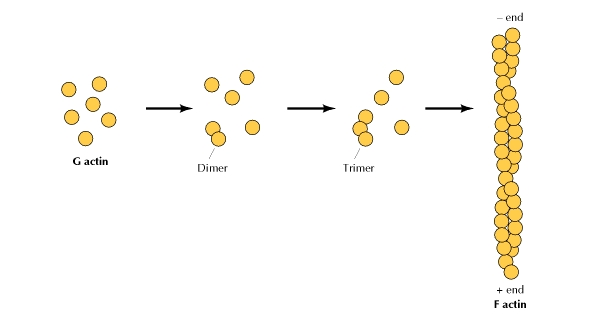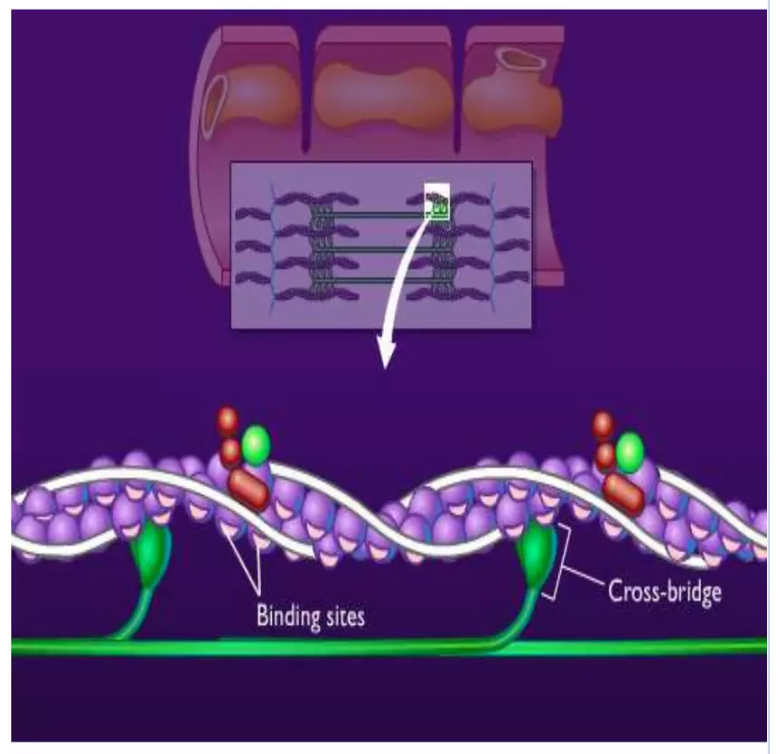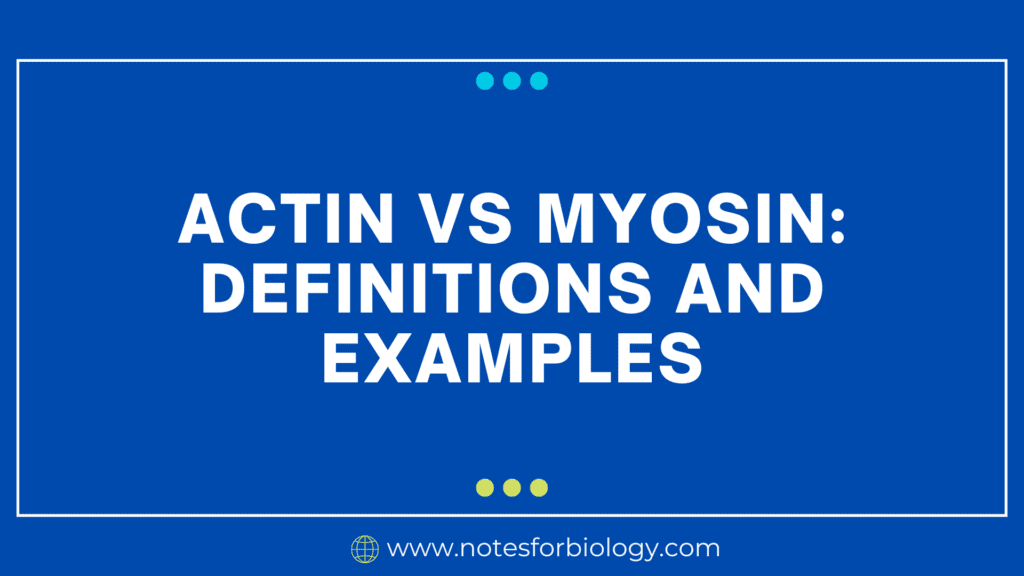Actin vs Myosin: Definitions and Examples
Actin filaments are in charge of a variety of cell movements, typically in conjunction with myosin. The first example of a molecular motor is the protein myosin, which transforms chemical energy from ATP into mechanical energy to produce force and motion. Muscle contraction is the most notable type of movement, and it has served as a model for comprehending actin-myosin interactions and the motor activity of myosin molecules.
Table of Contents
Definitions:
Actin
Actin, a globular multifunctional protein(G-actin), is what gives actin its long filament-forming ability (F-actin). It is a significant part of the cytoskeleton in all eukaryotic cells and is essential for a number of cellular functions, such as cell motility, muscle contraction, and shape maintenance.

Myosin
To enable cellular migration and muscle contraction, myosin, a kind of motor protein, collaborates with actin. Force and movement are produced when it transforms chemical energy—found in ATP—into mechanical energy.

Actin vs Myosin
| S.N | Actin | S.N | Myosin |
| 1) | Most eukaryotic cells contain large amounts of the globular proteins known as actin. | 1) | Myosin is a motor protein that, through its interactions with actin filaments in muscle and other cell types, transforms chemical energy from ATP into mechanical energy. |
| 2) | It is in eukaryotic cells’ cytoplasm. | 2) | It is present in several cell types but primarily found in muscle cells. |
| 3) | It is a member of a gene family that is conserved in all eukaryotes. | 3) | It consists of a superfamily with various structures and roles. |
| 4) | Filaments can rearrange quickly, although they are generally stable in actin. | 4) | After forming, thick filaments are more stable in myosin. |
| 5) | It provides the pathways that myosin uses to move. | 5) | It produces movement by moving along actin filaments. |
| 6) | Mutations can result in diseases that impact muscular function, such as actinopathies. | 6) | Mutations in myosin can result in myopathies and other illnesses affecting the muscles. |
| 7) | Actin mainly gives myosin motors structural support and tracks. | 7) | Actin filament interactions allow myosin, a motor protein, to propel motions |
| 8) | Myosin heads attach to actin-formed thin filaments during contraction. | 8) | Thick filaments called myosin are formed, which pull actin filaments to cause muscle contraction. |
| 9) | Actin does not hydrolyze ATP; it just binds it. | 9) | Myosin produces energy for movement by hydrolyzing ATP. |
| 10) | Actin polymerizes into filaments; actin-binding proteins govern its dynamics. | 10) | Forms dimers and aggregates into thick filaments; it does not polymerize in the same manner. |
| 11) | Myosin, tropomyosin, and other actin-binding proteins can bind to actin through its binding sites. | 11) | Actin and ATP binding sites are present in myosin. |
| 12) | Various tissues have distinct isoforms, including α-actin, β-actin, and γ-actin. | 12) | Various classes and isoforms with distinct roles and sites, including as Myosin I, II, and V. |
| 13) | It controls muscle contraction through interactions with proteins such as tropomyosin and troponin. | 13) | Light chains and myosin-binding proteins control myosin activity. |
| 14) | Examples: Microfilaments: A component of cell movement and form. Sarcomeric Actin: Found in the Fibers of muscles. | 14) | Examples: Myosin II: Promotes cytokinesis and muscular contraction. Myosin V: Participates in the intracellular movement of organelles. |
It is evident from a comparison of actin vs myosin that both are necessary for cellular functions such as muscle contraction. Actin gives myosin structural support and binding sites, and myosin is a motor protein that transforms ATP into mechanical energy. When combined, they allow for movement and preserve cell integrity in addition to facilitating a variety of cellular functions, including muscle contraction.
Frequently Asked Questions(FAQ)
What structural distinctions differ between myosin and actin?
Actin: G-actin monomers exist and polymerize to become filamentous F-actin.
Myosin: Consists of heavy and light chains that form dense filaments in the head, neck, and tail regions.
How are the functions of actin and myosin different?
Actin: Myosin uses actin as a track and structural support.
Myosin: Muscle contraction and other motions are propelled by the motor protein myosin, which travels along actin filaments.
Can you describe the roles that myosin and actin play in cells?
Actin: Helps in muscle contraction, cell motility, and cytoskeleton formation.
Myosin: Myosin II is involved in muscle contraction, while Myosin V is involved in the transport of organelles.
What roles do myosin and actin play in cellular movement?
Actin: Forms structures such as filopodia and lamellipodia and provides tracks for myosin motor proteins.
Myosin: Promotes cell motility and organelle transport by moving along actin filaments.
Related Articles:

